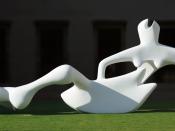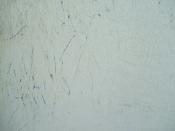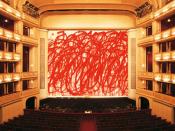Cy Twombly's Sculptures
Cy Twombly was born in Lexington, Virginia, in 1928. His sculptures are made from recognizable, used-looking, everyday objects: cartons, crates, cardboard rolls, palm leaves, and panpipes. The latest ones consist of sand mixed with plaster, or are directly worked in plasticine and plaster, before being cast in bronze or synthetic resin by a process that destroys the original. All the sculptures are painted with Cementito; the resulting nuances of white, and the intensity of light, rob them of their concrete quality as objects. They transmit as unreal, elusive radiance. They are transmitters of light, transmitters of silence, and transmitters of poetry. In some of his sculptures, for example, Humul, 1986, painted bronze, 63 x 84.7x38cm the transitions from one component to another, or from horizontal to vertical, have been made smoother by pressing malleable material into the joints.�
During Twombly's development he continuously rearranged three elements in his works: word, mark and material.
The last category includes both the oil paint of Twombly's canvases and the components of his sculptures. After making less than ten of the white-painted wood constructions in the second half of the 1950s, the artist suspended sculptural activity throughout the 1960s and early 1970s. Since taking up sculpture again in 1976, he has produced at least thirty works, with several of his most recent pieces cast in bronze and then painted white. It is fitting, in a period when Twobly's painting and drawings have used multiple and appended surfaces so extensively, that he should also piece together a greater number of sculptures. His sculptures are usually pieced together from all manner of salvaged scrap (bits and boxes of wood, poles, cardboard cartons, pieces of tin) and joined together by equally various methods (string, nails, wire, clay, plaster).
According to Szeemann, on one...


